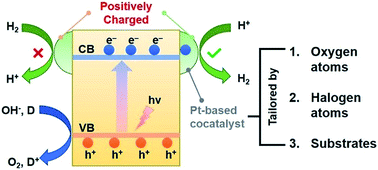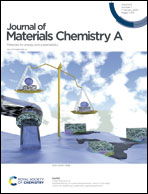Positively charged Pt-based cocatalysts: an orientation for achieving efficient photocatalytic water splitting
Abstract
Considerable effort has been made to develop efficient water-splitting photocatalysts, which are generally composed of light-absorbing semiconductors and so-called cocatalysts that play a key role in accelerating the reaction kinetics of water splitting. Platinum (Pt)-based catalysts have been widely regarded as excellent cocatalysts for photocatalytic water splitting, but the relationship between their valence state and reaction activity for photocatalytic water splitting had never been summarized. This review presents positively charged Pt nanoparticles, clusters and even single atoms that can boost the reaction activity dramatically, and summarises several strategies and techniques to tailor the positive valence states of Pt-based cocatalysts such as by using oxygen atoms. By tailoring the valence states of Pt-based cocatalysts, the capacities of these cocatalysts for water splitting can be significantly enhanced. Moreover, the operando analyses that can determine the real structures of this type of cocatalyst under working conditions are also discussed. These developments suggest that positively charged Pt-based cocatalysts could determine the direction and efficiency of photocatalytic water splitting, which may provide an ideal orientation to design state-of-the-art catalysts for achieving efficient photocatalytic water splitting.



 Please wait while we load your content...
Please wait while we load your content...